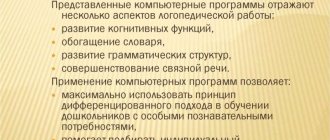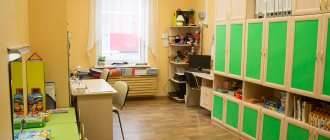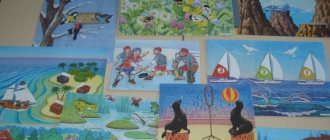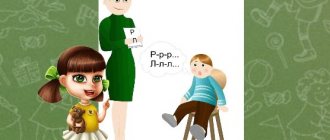Using the project method in correctional and developmental work with preschoolers with SEN -3
Project method
is a pedagogical technology, the core of which is the independent activity of children - research, cognitive, productive,
in the process of which the child learns about the world around him and translates new knowledge into real products. A child is born a researcher. An unquenchable thirst for new experiences, curiosity, a constant desire to observe and experiment, to independently seek new information about the world, are traditionally considered as the most important features of children's behavior. Thus, satisfying his curiosity in the process of active design and research activities, the child, on the one hand, expands his ideas about the world, on the other, develops his communication abilities.
It's no secret that children with speech disorders have the following problems: a poor vocabulary, inability to coordinate words in a sentence, and impaired sound pronunciation. Most children have impaired attention and imperfect logical thinking. Therefore, speech therapy in eliminating general speech underdevelopment is a very difficult matter. It is necessary to teach children to express their thoughts coherently, consistently, and grammatically correctly, and to talk about various events from the surrounding life.
“In productive activities, the development of perception and awareness of speech by children occurs much faster, since speech acquires a truly practical orientation and is of great importance for the performance of a particular activity,” writes S.A. Mironova about the importance of practical experience for preschoolers with speech disorders.
By solving various cognitive and practical problems during the design process together with adults and peers, children with speech underdevelopment motivatedly enrich and activate their vocabulary, learn to speak publicly, and communicate adequately with others.
The project method in kindergarten has become one of the most important components in organizing direct educational activities. Its most important advantage is the independent “acquisition” of knowledge by children. “Tell me and I’ll forget, show me and I’ll remember, let me try and I’ll understand,” says Eastern wisdom. Indeed, only by acting independently, through trial and error, does a child acquire—“appropriate”—knowledge and experience.
And the main advantages of the project method in the work of a speech therapist are a significant reduction in the predominant activity of an adult, the possibility of correction and learning through
joint search for solutions, providing preschoolers with the opportunity for independence, cooperation, co-creation on an equal basis, intellectual and creative self-development. Children of different levels of preparedness are able to work on the project. The main thing is to help the child believe in himself. Children most fully and clearly perceive what was interesting, what they themselves found and proved. After all, you can always find something interesting and exciting in everyday life and in the educational process. You just need to find it and serve it to the children, which will encourage them to make similar finds and discoveries. Design requires individual original solutions and at the same time collective creativity. By working in group creativity mode, the abilities for mental activity, choosing adequate solutions, and the ability to build a whole from parts are intensively developed.
Technology “project method” in the pedagogical practice of a speech therapist teacher
Modern speech therapy is in a constant active search for ways to improve and optimize the process of learning and development of children at different age stages and in various educational conditions that are typical for children with speech disorders.
Certain requirements for the use of variable technologies of modern education are focused on the potential capabilities of a person with the aim of qualitatively changing the student’s personality, namely: developing the ability to motivate actions, independently navigate the information received, the formation of creative unconventional thinking, the development of children through the maximum disclosure of their natural abilities, using the latest achievements of science and practice.
One of the most effective technologies today is the “project method”.
Is it possible for a speech therapist teacher to use the project method in his teaching practice with children with special educational needs?
Our own pedagogical experience, analysis of scientific and methodological materials and modern research in the field of education and training of children with speech impairments, allowed us to establish that this particular technology is relevant and effective.
So why is the “project method” technology actively introduced and used in the pedagogical practice of speech therapists?
This method helps prepare a child for successful schooling, provides an opportunity to experiment, synthesize acquired knowledge, develop creativity and communication skills. The knowledge and skills that a child acquires in the process of practical activity are acquired faster, easier and give good results; Complex and sometimes uninteresting speech therapy exercises become an exciting activity for the child.
In addition, the thematic principle of planning speech therapy work to clarify and enrich the vocabulary of children with SLI allowed us to integrate various types of activities in a single thematic project, which is based on the problem. In addition, it avoids overloading children, helps free up time for children’s free play activities, and ensures direct interaction between specialists in the correctional process.
The projects we implemented were of various types: humanitarian, sociological, biological; by the nature of their activities they were all research.
After such children's inquisitive questions about the correct name for such an item of winter clothing as mittens or mittens? It is the same? Or not? And where did these words come from? It was this item of clothing that became the object of the research project “Mittens and Mittens.”
In order to clarify the difference between mittens and mittens, get acquainted with the history of the origin of this item of clothing, study the practical significance and meaning of the ornaments on mittens, the following sources were selected: dictionaries, magazines, books, encyclopedias of the library collection, a video excursion to the museum of mittens.
It became significant not only to study theoretical material, but also to confirm in a practical way (experiment) one of the versions of the origin of the name of the mitten.
The result of work on the project was: a full-time performance and victory of a pupil at the Science Olympiad for preschoolers, a charity event “Warmth of Hands”, booklets “Interesting facts about mittens and mittens”, and most importantly, high, consistently positive results in correctional and pedagogical work, an atmosphere of trust and mutual understanding , creative partnerships between children, parents and teachers.
The “project method” technology is very relevant in modern preschool education; it allows teachers to expand the educational space, provide an opportunity to develop the child’s creative, cognitive thinking, and communication skills. All characteristics, levels, criteria and requirements for pedagogical technologies are fully correlated with an understanding of the essence of speech therapy technology.
By actively using the “project method” technology in innovative teaching, the speech therapist teacher makes the correctional and educational process more complete, interesting, and rich. When crossing educational areas, such integration is simply necessary for the formation of a holistic worldview of children with speech disorders and underdevelopment.




